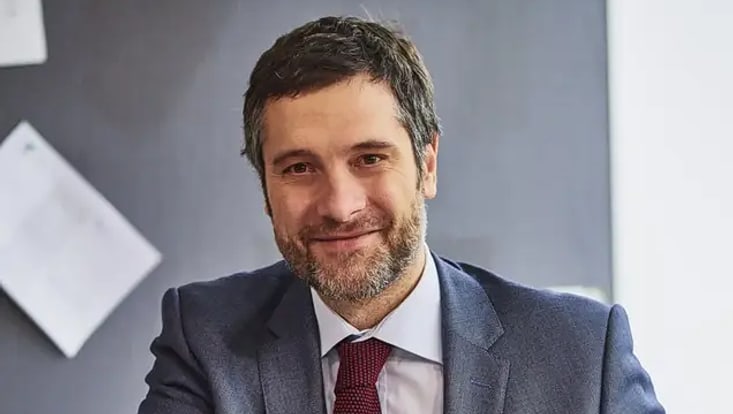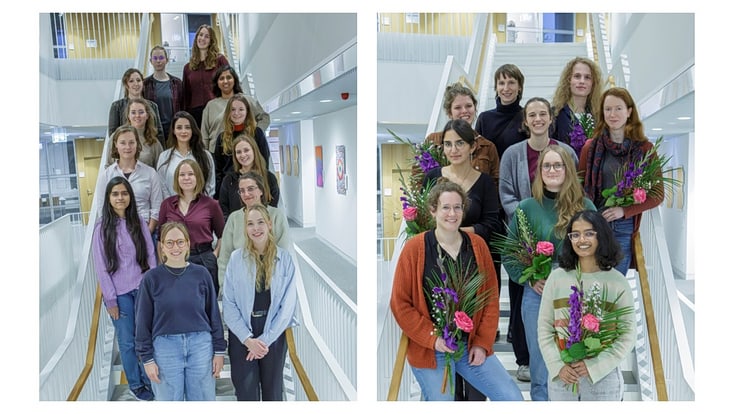Imaging of Matter
The ultrafast meets the ultrashort: CUI team awarded prestigious ERC Synergy Grant for IDEAA project
6 November 2025

Photo: private
A team of scientists from the Cluster of Excellence “CUI: Advanced Imaging of Matter” at the University of Hamburg and from DESY has been awarded a prestigious Synergy Grant from the European Research Council, receiving €14 million to combine atomic-scale imaging with the Nobel Prize-winning field of attosecond science, the most advanced ultrafast imaging of matter in science.
These grants are among the most prestigious offered in the European Union, recognizing outstanding scientific excellence and unique collaboration. Dr. Saša Bajt, Prof. Francesca Calegari, Prof. Henry Chapman, and Prof. Nina Rohringer initiated the winning IDEAA (Imaging the Dynamics of Electrons at Attosecond and Ångstrom resolution) project: The goal of the team is to observe the motions of electrons within complex organic molecules. This information will be the key to fully understand the electronic fundamentals of chemistry, a major step towards controlling chemical reactions: a paradigm shift in our understanding of nature, but also in chemical engineering, drug development, industrial processes, and much more.
“We pioneered the use of attosecond light sources to ‘film’ the ultrafast migration of electronic charge occurring in complex molecules. However, these movies of electron dynamics have only been produced by combining theory and indirect spectroscopic observation in experiments,” says Francesca Calegari, lead scientist at DESY, professor of physics at the University of Hamburg and speaker of CUI, lead of the Attosecond Science group at the Center for Free Electron Laser Science (CFEL). “We want to directly produce these movies out of our measurements.”
The challenge: showing the dynamics at the scale of an angstrom
Attosecond science, which was the subject of the 2023 Nobel Prize in Physics, enables such direct observations. Electron motion becomes clearer at the attosecond scale—a billionth of a billionth of a second—but the challenge for the team is showing this at the scale of an angstrom, a length equal to a ten-billionth of a meter. An angstrom is at the scale of the radius of a single atom. “We want to be able to watch how chemistry happens at the atomic scale, and using new capabilities at X-ray free-electron lasers and tabletop lasers, we now can get to those time scales,” says Henry Chapman, lead scientist at DESY, a professor of physics at the University of Hamburg and speaker of CUI, lead of the Coherent X-ray Imaging at CFEL at DESY, and inventor of a number of crucial X-ray laser research techniques. “But you immediately see how difficult it is to image anything, as light only travels a few angstroms in that time. That’s where Saša’s lenses come in.”
Saša Bajt, a DESY lead scientist leading an advanced optics group at CFEL and principal investigator in the CUI cluster, makes unique multilayer Laue lenses that can control the wave front of the X-ray beam to the precision needed for attosecond pulses. “These lenses can focus the beam down to a single unit cell of a crystal, but here we use this extreme focusability in a different way—to magnify and encode time in the diffraction pattern of the crystal,” says Bajt. “As the four of us developed the concept of IDEAA, we found we needed to combine several new experimental techniques with theory.”
The aim: developing a synergistic, multimodal approach
Nina Rohringer’s expertise in light–matter interactions will be instrumental in developing the theoretical frameworks and algorithms essential to this innovative approach. “We aim to develop a synergistic, multimodal approach,” explains Rohringer, lead scientist at DESY, professor of physics at the University of Hamburg and principal investigator in the CUI cluster. “By combining data from various X-ray and laser-based techniques and analyzing them simultaneously with innovative algorithms, we can reconstruct the coordinated motion of electrons triggered by ultrafast laser pulses. This pioneering methodology will establish a new experimental benchmark for quantum chemistry and time-dependent electronic structure theory.” The team will use tabletop attosecond sources at DESY as well as the European XFEL, the world’s largest X-ray laser, as their primary locations for their research.
The European Research Council (ERC) is the premier research funding body for frontier research in the EU. The ERC Synergy Grants are particularly prestigious as they require exceptional interdisciplinary collaboration. With only 66 projects funded out of 701 applications in 2025 (a success rate of just 9.4%), these awards position the recipients among Europe's top researchers. The grants not only provide substantial funding but also carry significant prestige, enhancing the international reputation of both the individual researchers and DESY as a leading research institution.
The funding over six years will enable the group to expand their teams, develop cutting-edge instrumentation, and steer their research into new directions through the ambitious, high-risk research program. Their goal is to develop an ‘attosecond microscope’ that will help to redefine photochemical reaction engineering, pushing the boundaries of observing and controlling the dynamics of matter at extreme time scales. Additionally, they aim to provide benchmarks to longstanding theories using direct evidence provided by their new methods. Text: DESY, CUI


